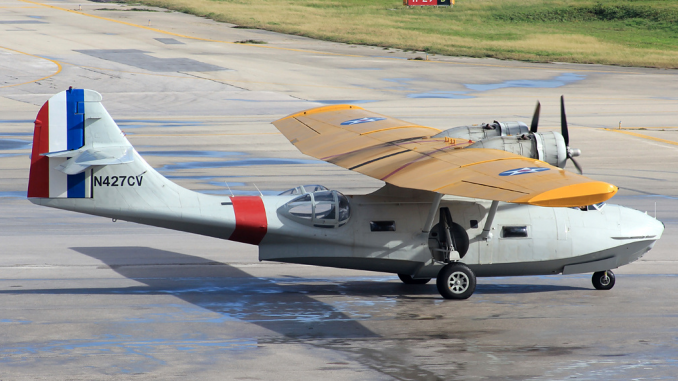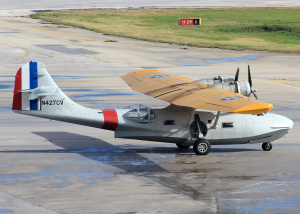

Canadian Vickers PBV-1A Canso N427CV (the registration number is apparently a nod to the plane’s original Canadian Vickers construction number of CV-427) has recently completed a complete stem to stern restoration in Rand, South Africa, performed by Springbok Aviation Services.
This machine which is a Canadian-built variant of the Consolidated PBY Catalina, was constructed in Cartierville, Quebec, in mid-1944 and was delivered to the Royal Canadian Air Force who employed it for anti-submarine patrols based out of Reykjavik, Iceland. After the war, the plane served at various maritime stations around Canada before it retired from military service in 1962 and went on to the Quebecois Department of Transportation. Later it was converted to a water bomber for fighting fires and flew in that demanding role for 32 years, before being retired in 1994. The plane was flown to South Africa in 1999 and was soon grounded.
The current owner of the plane, Jim Slattery, resides in San Diego and intends to incorporate the amphibious plane in a purpose-built museum along with the other warbirds in his collection which include a Grumman F3F-2, a Curtiss SB2C-1A Helldiver (which is currently being restored to airworthy condition), the world’s only known surviving Brewster-built Corsair F3A-1 as well as a pre-war Douglas B-23 Dragon bomber that was once used by Howard Hughes as his personal aircraft.
The plane was finished by Springbok Aviation with a period-correct pre-war US Navy Livery and has just been flown from Rand, South Africa to San Diego via the southern route which took the plane through Walvis Bay, Namibia then to Luanda, Angola, Cameroon and Monrovia, Liberia, before crossing the South Atlantic to Natal, Brazil and up through Central America to its new home in Southern California.


Be the first to comment
Graphic Design, Branding and Aviation Art